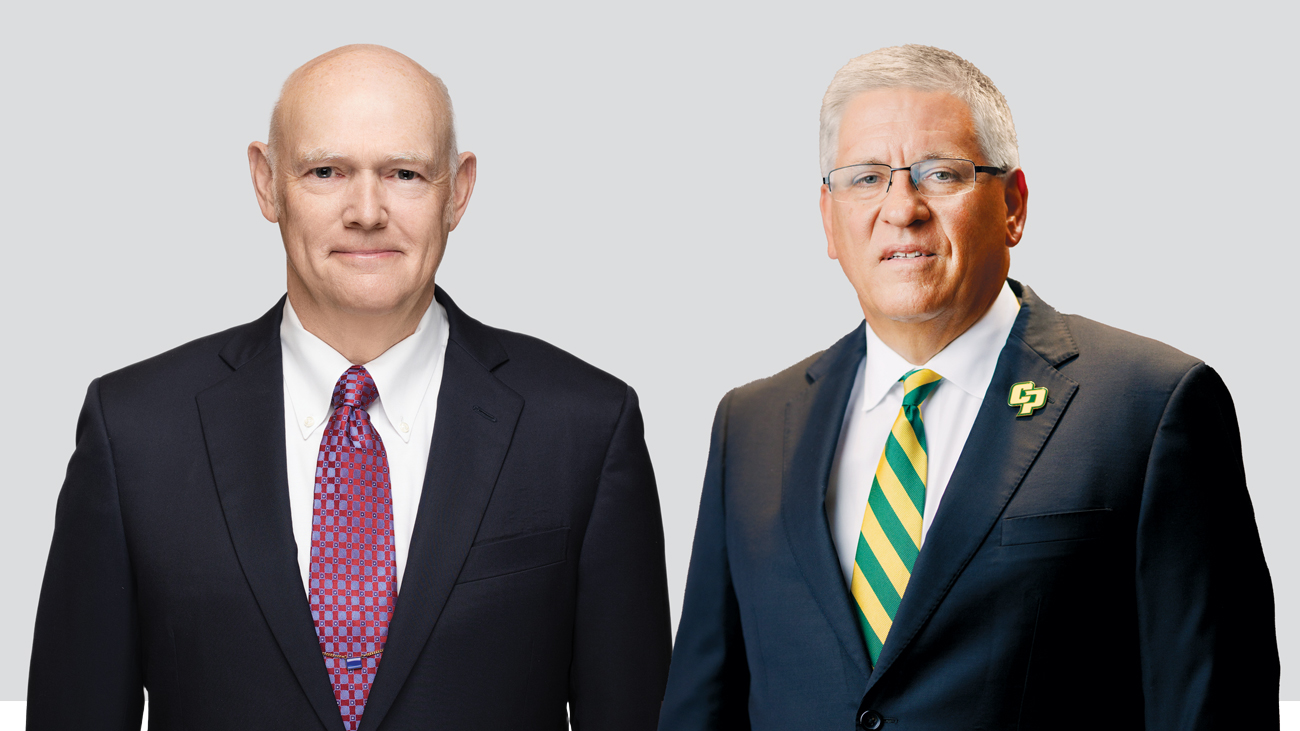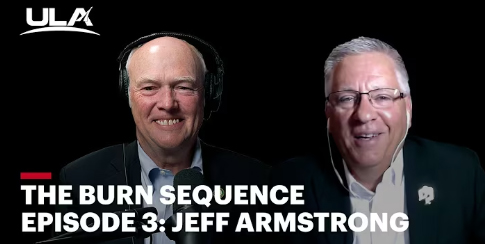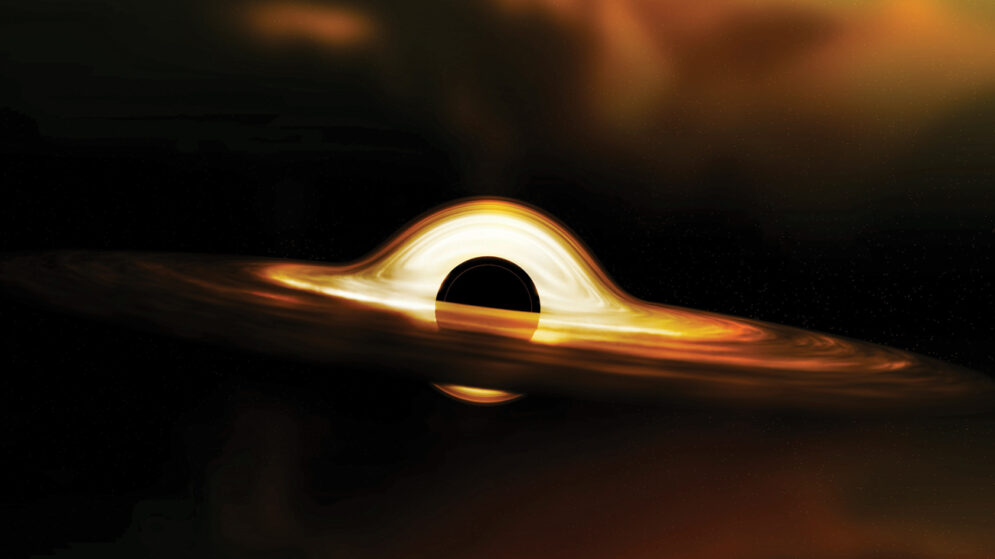The Last Word
It's Just Rocket Science
President Armstrong and alumnus Tory Bruno discuss Learn by Doing and meeting the needs of the future’s most critical industries.
Share this article:

United Launch Alliance President and CEO Tory Bruno (left) and Cal Poly President Jeffrey D. Armstrong (right).
Tory Bruno (Mechanical Engineering ’85) is an aerospace engineer, president and CEO of the rocket firm United Launch Alliance (ULA), a proud Cal Poly alumnus and host of a new podcast, “The Burn Sequence.” When President Jeffrey D. Armstrong joined the podcast recently, he and Bruno talked about life as a rocket scientist, Bruno’s experience at Cal Poly, and the role of polytechnic education in preparing young people for successful and productive careers. Below are a few excerpts from their 45-minute conversation. This interview has been edited for length and context.
Bruno: Lately, I’ve been thinking a lot about education. We’re really in an era of ascendancy of technology. And our wonderful university system across this country produces the best engineers and scientists in the world by far. And so today, I have a guest who leads one of the preeminent public polytechnic universities in our country. There is nothing more powerful than education, including universities as well as technical vocational education, to change the economic destiny of a person and their family.
Armstrong: Well, I am honored to be here and it’s fantastic to hear you say that. We’re here to provide an interdisciplinary approach to education, to prepare whole-system thinkers to solve complex problems like you do at ULA every day. We know that in California industries like yours, there’s a predicted shortage in STEM and engineering professionals. So our approach is really rooted, as you know, in that polytechnic hands-on Learn by Doing tradition. You’re ready for that job day one.
Bruno: Some of our “Burn Sequence” listeners aren’t familiar with this concept of a polytechnic. I wonder if you would talk about that for a minute.
Armstrong: Think about the word polytechnic. It means many technologies. And while we emphasize STEM, agriculture, architecture and math, we also recognize the essential role of the liberal arts. So, our business students — who lead the way in graduation rates — take more math at Cal Poly than business majors do at most other public universities.
We also have a philosophy of Learn by Doing. It’s a deliberate process where students have hands-on learning from day one.
Mechanical engineering students still learn how to weld like you did when you were a student at Cal Poly. Our students join faculty in their research. More than 70% of our engineering students take part in one or more internships. They all do a senior project preparing them for work in industries like yours that have demand for talent in engineering, in business, in agriculture.
Bruno: Learn by Doing, that hands-on experience, it sticks with me to this very day. The way that manifests at Cal Poly is in the laboratories. There are laboratories for practically every engineering class you take. And it gives you an intuitive sense for the course material you’re studying that you really can’t get in almost any other way.
Armstrong: We have been the fifth-grade trip at some schools for 13-plus years. We now have students graduating from Cal Poly in a range of majors who experienced that fifth-grade trip and got turned on to Learn by Doing in STEM. They’re going to be our future doctors, engineers, lawyers.
“That hands-on experience sticks with me to this very day. It gives you an intuitive sense for the course material you’re studying that you really can’t get in almost any other way.”
Tory Bruno, President and CEO of United Launch Alliance
Bruno: What a great legacy and so powerful. I have found over the years that when people are choosing their path in life, they just cannot aspire to something unless they can first imagine themselves in that role. So, coming on campus like that to see that they could have a home there, too, is very powerful. In industry, we want to play our part by showing students careers early in their life. I wonder if you could talk a little bit about the role for industry working with polytechnics and other universities.
Armstrong: We have alumni and industry representatives involved in every major. There’s an industry advisory board for the university, for each college, each major, even down to the level of concentration. As we grow, we’re going to add more faculty so we can partner with industry to do more applied research. So, I would say to industry leaders: get involved, consider teaching and make internships available. I hope we see some faculty spending a few months at ULA on an industry sabbatical, learning about what you guys do.
Bruno: When I was a student, I had many professors who had retired from industry. In a lot of ways, they were national experts in their disciplines. When they taught us the academics, we also learned its application for business, which is really the power of that polytechnic education. I love your idea for faculty internships with industry. You can sign us up right now, and we’ll figure out how to do that.
Check out the Full Episode
 Listen to “The Burn Sequence” to hear more of the conversation between Bruno and Armstrong, including questions from ULA student interns and the “Lightning Round” where Armstrong answers crucial questions about space, like: Kirk or Spock?
Listen to “The Burn Sequence” to hear more of the conversation between Bruno and Armstrong, including questions from ULA student interns and the “Lightning Round” where Armstrong answers crucial questions about space, like: Kirk or Spock?
Your Next Read
Two physics professors are working on some of the biggest questions haunting the universe, thanks to an astronomy research fellowship.
Aerospace engineering student Kanan Thummar is at his best in a worst-case scenario — which is why he wants to be an astronaut.




